Casertavecchia is a piece of the Middle Ages ten kilometers from one of the most celebrated masterpieces of Baroque architecture: the Vanvitellian Palace of Caserta. Casertavecchia lies on the slopes of the Tifatini Mountains, just over 400 meters above sea level, and its origins date back to before the year 1000 when the first nucleus of the village was built on a pre-existing Roman village. Casertavecchia, in the course of its long history, underwent various dominations, remaining the political and cultural center of this entire territory until the construction of the new Caserta began and the gradual transfer, not only of the population, to the plains. With the rule of the Bourbons insouthern Italy and the construction of the Royal Palace of Caserta, on the other hand, the new center of all activity became Caserta, and for Casertavecchia the decline was inevitable. Today, however, as a reminder of the splendid past that was remain the cathedral, the bell tower, the ruins of the castle and the streets of the entire village, all in Sicilian-Norman style. Visiting Casertavecchia is an experience not to be missed because it is still off the major tourist routes and because, at the same time, it allows a complete immersion in the daily life of these lands in ancient times. Among small and large artistic and architectural masterpieces, it is then possible to fully appreciate the unique hospitality of the inhabitants of the area and taste the many food and wine specialties that the area has to offer. Here are the must-see stops on your trip to Casertavecchia.
Casertavecchia is now a hamlet of Caserta, but for centuries it was the beating heart of this entire area. The vestiges of this important past are everywhere, just make your way through the streets of the ancient medieval village that is still perfectly preserved. That same village has undergone various dominations throughout history, and each of these has left important marks ever since, following the Saracen raids and the devastation of Capua, the inhabitants and clergy of the surrounding areas found a safe haven in Casertavecchia, protected by the mountains. Swabians, Aragonese, and Bourbons all made their contributions to the construction and expansion of Casertavecchia, and unique buildings such as the cathedral, the famous bell tower, or the ruins of the castle remain from all of these transitions, but it is above all the streets of the entire village that recall the splendor of a time long past. Among the streets, lanes and alleys, one can then enjoy an incredible panorama that embraces the entire surrounding valley, and one can relax in the many bars and restaurants.

One of the symbols of Casertavecchia is definitely its medieval cathedral. Dedicated to St. Michael the Archangel, the cathedral blends elements of the Sicilian-Arabian style, the Romanesque churches of Apulia, and the Benedictine style of Montecassino. There are many distinctive elements of this beautiful church beginning with the octagonal dome in turn decorated with two tiers of intertwined blind arches where alternating yellow and gray stones compose stylized floral and geometric motifs. The arch of the central portal rests on two lions and is decorated with a bull, that of the right portal rests on two horse-like animals, the left on two centaurs. The cathedral is most notable, however, for what it preserves inside where the three naves are separated by eighteen columns from a Roman temple and where the seventeenth-century pulpit made by reusing fragments of thirteenth-century ambos stands out. Also very beautiful is the 14th-century Madonna and Child on the pillar at the end of the right aisle; this is the only remaining fragment of the medieval frescoes.

Less conspicuous than the large cathedral, but endowed with a truly unique charm. The Church of the Annunziata dates back to the first half of the 16th century and is a clear example of how different architectural cultures can blend together. Distinctive elements of the church of the Annunziata are first of all a beautiful rose window and an arch in the Gothic style, where a stone portal in the Baroque style was later added, which decorate its facade. Gothic, on the other hand, is the style that dominates inside the church where an arch decorated with beautiful frescoes of religious subjects stands out. What is most striking about the Church of the Annunziata, however, is the mystical atmosphere that distinguishes it and contrasts it precisely with the nearby Duomo. Over the centuries this church has always been of minor importance and for this reason it performed mostly social functions, but perhaps because of this this church has always had a special place in the hearts of the inhabitants of Casertavecchia. Not to be missed, to the side of the church, on the building known as the former hospital, where there is a small niche with the remains of a fresco of the Annunciation.
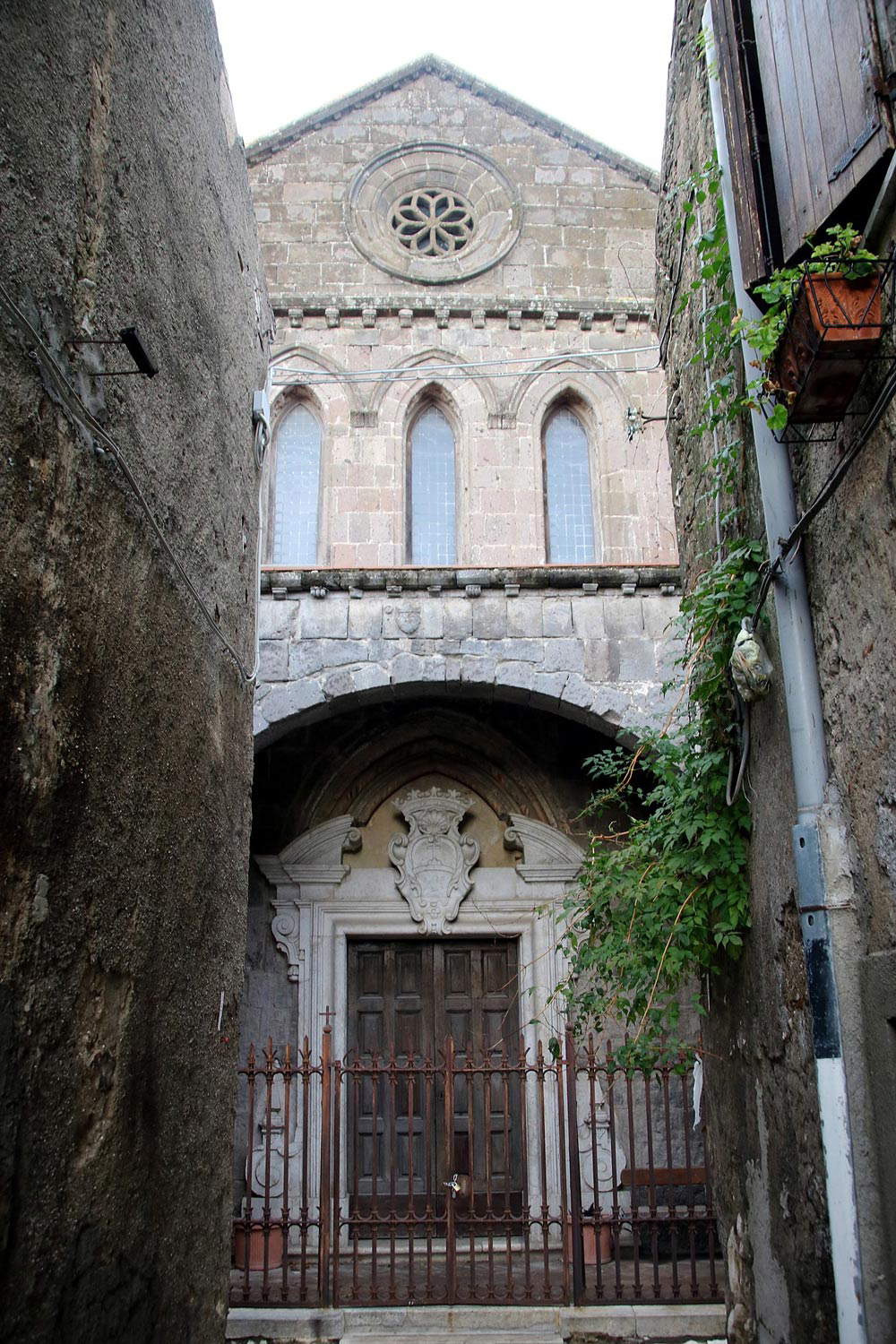
What remains of the ancient castle is certainly one of the most striking corners of all of Casertavecchia. It is a building that dates as far back as the 9th century when it was erected at the behest of Pandone the Rapacious, count of Capua. In the evocative centuries the castle was the home and center of power for the Longobard, Norman, Aragonese and Swabian counts, but today only a few traces remain of this great past. Still standing of the ancient castle are two halls above to the east of the ruins and traces of some 13th-century mullioned windows with two lights, and then the majestic tower. The latter, at 32 meters high and about 10 meters in diameter, was moated and consequently inaccessible. Although the visitor now only has to imagine what the castle was like at the height of its splendor, this remains a place endowed with a unique charm that still retains a timeless beauty that is also enhanced by events and performances. Don’t miss, in particular, the Settembre al borgo festival, one of the most anticipated events in Casertavecchia.

A symbol of Casertavecchia for eight hundred years. The bell tower of the cathedral is one of the most recognizable features of the town’s skyline, but also one of the places most immortalized by travelers. It stands beside the church, to the right of the facade, and with its bulk and austere beauty has dominated the streets of the village since 1234. In its style, the bell tower of Casertavecchia recalls that of Aversa Cathedral, but there are also numerous reminders of important Gothic influences, especially in the large ogival archway that on the ground floor allows the underpassing of a road leading to the castle. Thirty-two meters high and eight meters wide, the bell tower of Casertavecchia has five floors decorated with mullioned windows with two lights. On the fourth floor above the mullioned window to the north one can see a whole human figure holding a pigeon, to the west a man’s head, to the south another head, and finally to the east a head, but this time a bearded one. Instead, there are a total of four bells housed in the tower and arranged two per floor: the two largest are located on the second, while the third and fourth bells are placed on the third.
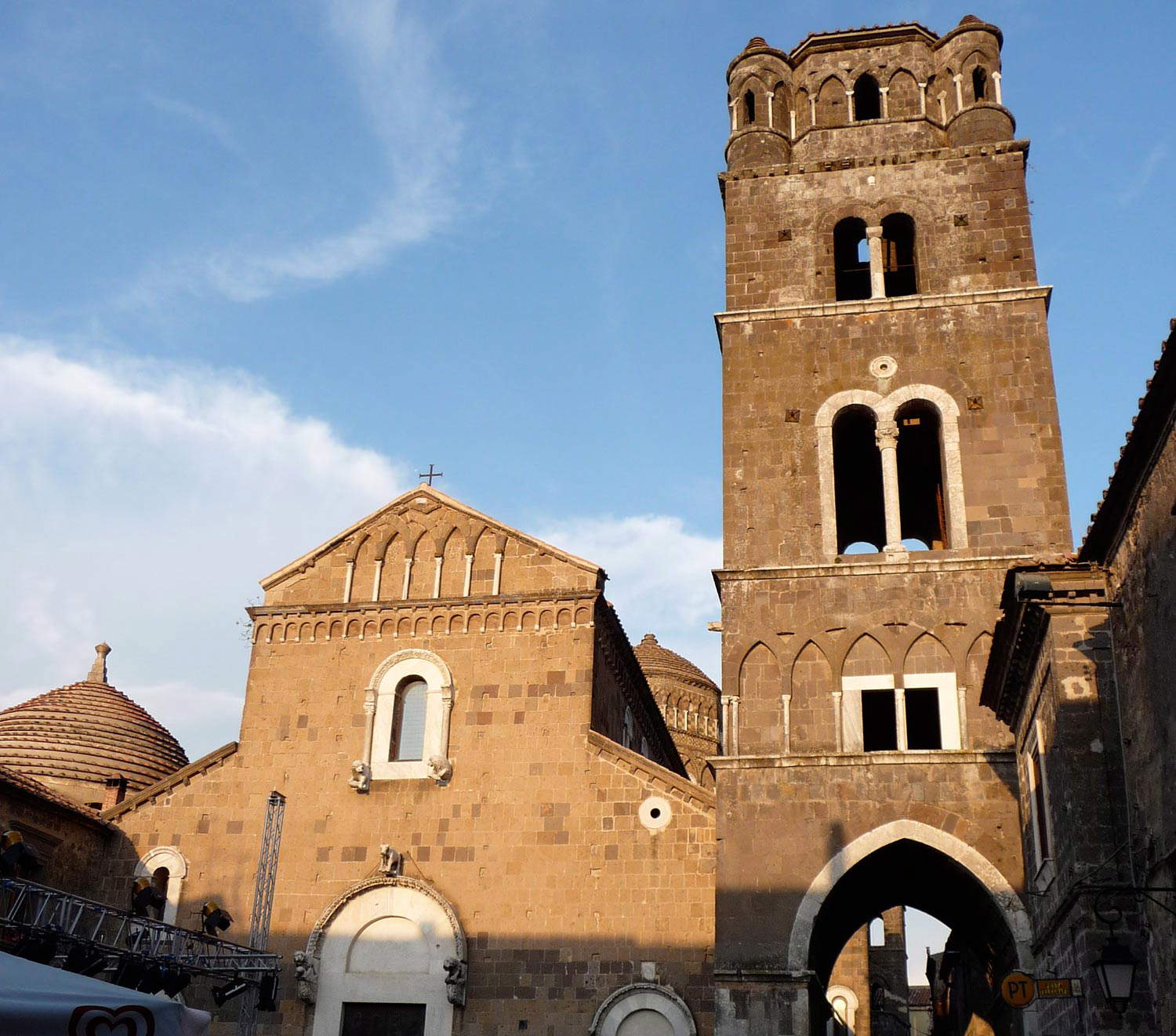
Imposing, majestic: the tower of the Hawks is one of the last elements of the Casertavecchia castle still standing and is now one of the largest medieval towers in Europe. The tower has three levels, but only one is accessible from the outside thanks to a drawbridge that, in ancient times, connected it to the main body of the castle. The other two floors could be accessed by a spiral staircase, carved into the wall, that connected the upper and lower levels. The lowest room was once used for storing food supplies, there was then space on the two highest floors for the guards’ and lord’s quarters. The purpose of the Hawks’ tower, however, has always been to be the last defensive bulwark of these lands, and for this reason access has always been complicated, which is also why stories and legends have been spread for centuries about what was kept inside. Among them was also said that inside the tower lived a hen with golden chicks that guarded a most precious treasure. Today it is worth a visit, if only for the wonderful view from its summit.
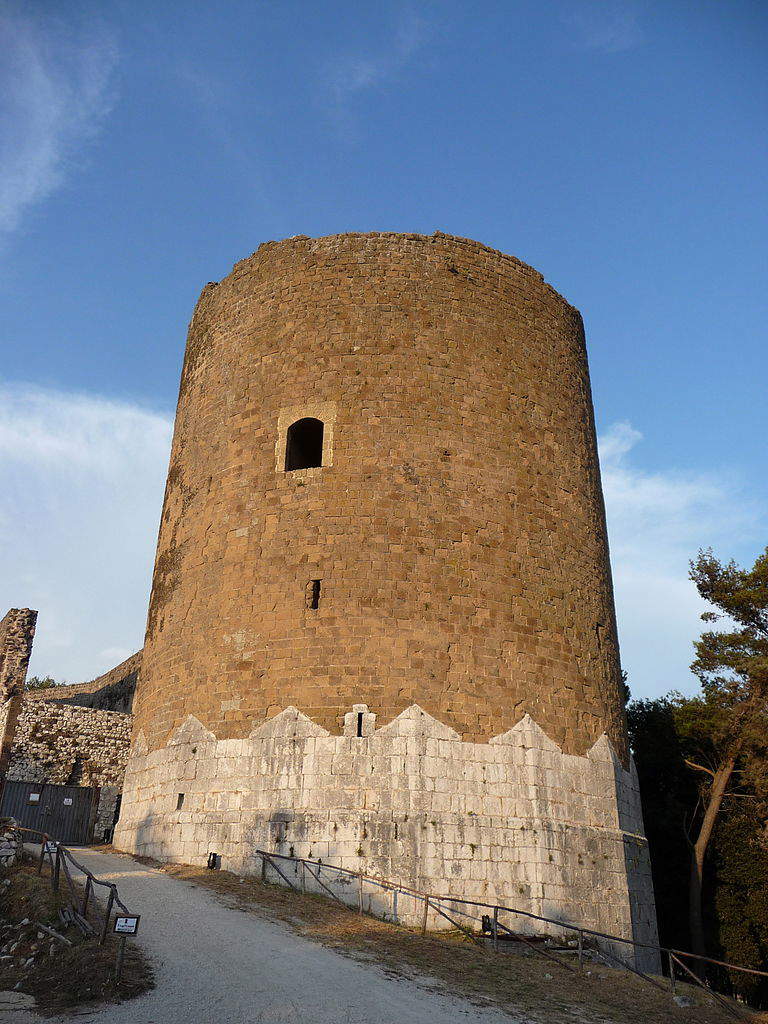
Vescovado Square is the beating heart of the village of Casertavecchia and has long been the beating heart of life in this land. The square is overlooked by the large cathedral, which is counterbalanced by what was once the seminary. It is a beautiful 17th-century building in which a central doorway decorated with marble columns stands out and where inside it is possible to see a Longobard-style wrought-iron cross placed in 1953 to commemorate the 700th anniversary of the consecration of the cathedral. Great protagonist of Bishop’s Square, however, is also the eponymous Palace of the Bishops, which occupies half of the southern side of the square. The palace has two floors and is made of tuff with the facade overlooking the square and showing two round-arched portals on the ground floor. As for the origins of the bishops’ palace, there are no certain sources, but historians date its construction between the 13th century and the middle of the following century.
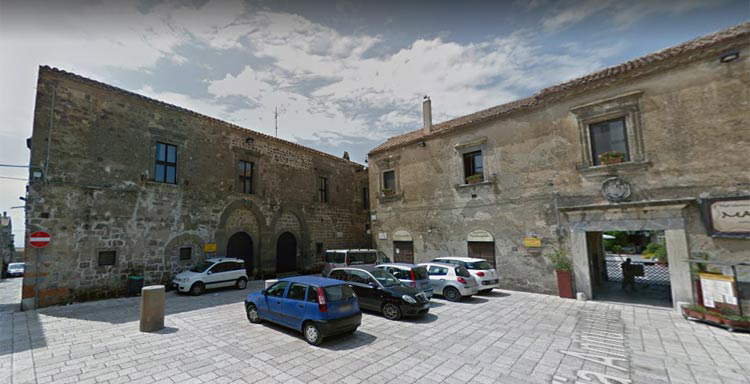
Tradition, myth and legend, all this and much more can be found in a magical corner of Casertavecchia.: the House of Mullioned Windows. It is a small deconsecrated church dating back to the 11th century, saved from ruin thanks to the doggedness of German-born artist Ursula Pannwitz in the 1970s. Here they found their adopted home of characters characteristic of the village of Casertavecchia: the spiritelli, benevolent spirits who protect the old houses and come out at night to roam the narrow alleys of the village. These took shape thanks to the creativity of the artist who, inspired by the shapes of old earthenware pots and pans, decided to make jars decorated with joyful and colorful faces, all different. Inside is kept a card engraved with a wish, destined to come true when the pot is broken. From Dario Fo to Giulietta Masina, over all these years there have also been many famous visitors who have lost themselves among the rooms of the House of Mullioned Windows, enraptured by the magic that can literally be breathed in every corner of it.
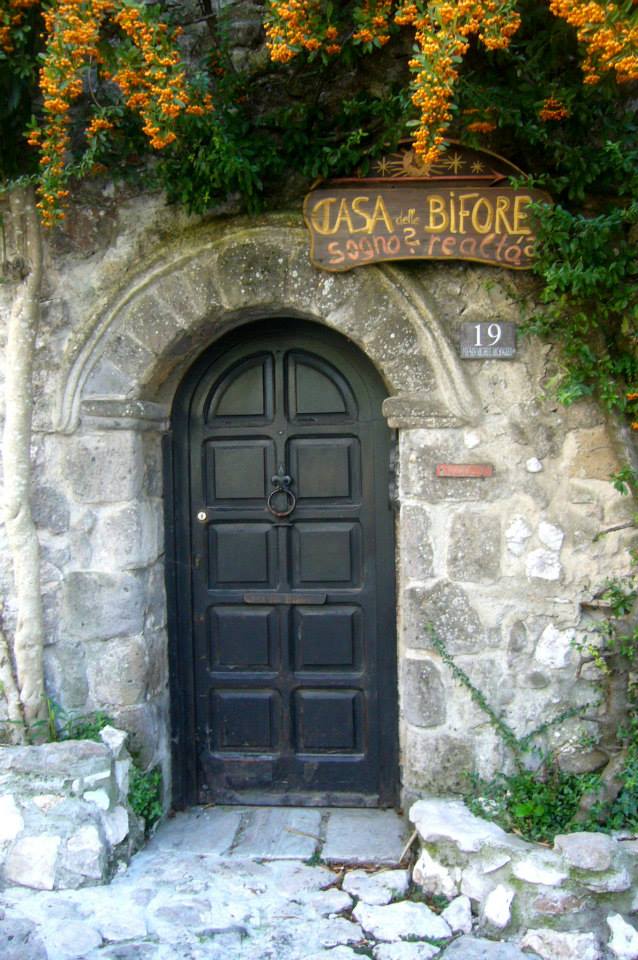
 |
| Casertavecchia, what to see: eight-step itinerary |
Warning: the translation into English of the original Italian article was created using automatic tools. We undertake to review all articles, but we do not guarantee the total absence of inaccuracies in the translation due to the program. You can find the original by clicking on the ITA button. If you find any mistake,please contact us.